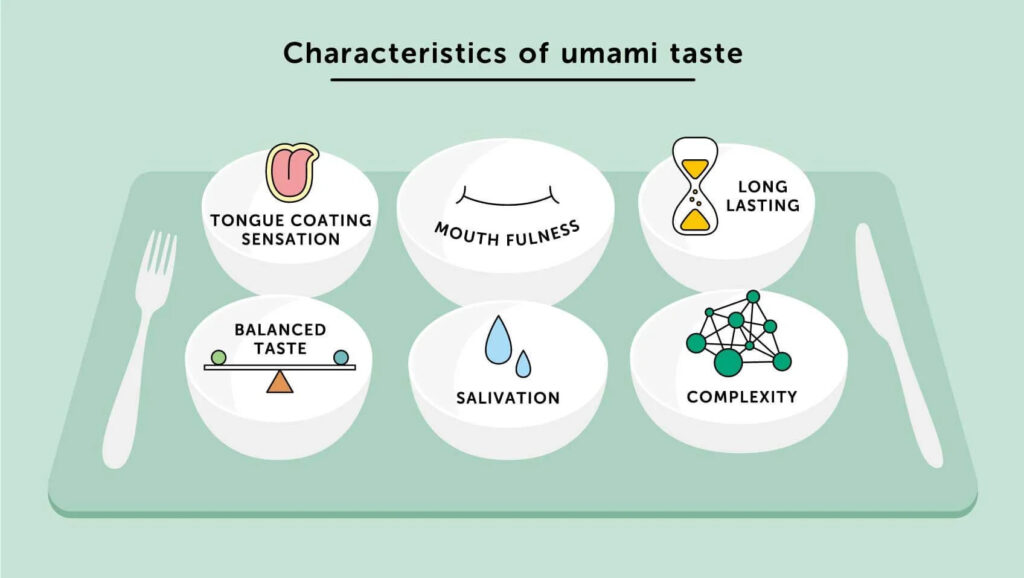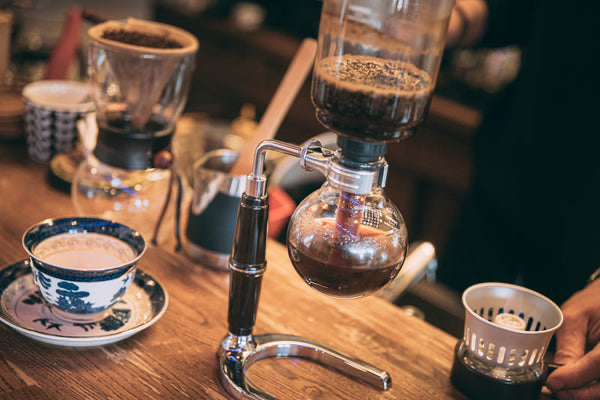When most people think of coffee, they talk about acidity, sweetness, bitterness, or aroma. But in Japan, there’s another dimension that coffee enthusiasts have been exploring for decades — umami. Often described as the “fifth taste,” umami is that deep, savoury richness that makes foods like soy sauce, miso, and dashi so satisfying. And surprisingly, coffee—especially when brewed thoughtfully—has umami, too.
So what exactly is the umami of coffee, and why has Japan become one of the few cultures to truly embrace it? Let’s dive into how the Japanese understand and elevate this subtle but powerful flavor profile.
Understanding Umami: The Fifth Taste

The term umami (旨味) comes from Japanese words meaning “pleasant savoury taste.” Discovered by Professor Kikunae Ikeda in 1908, umami refers to the flavour produced by glutamates—compounds naturally found in foods like mushrooms, tomatoes, seaweed, and fermented soy. It’s what gives ramen broth its comforting depth and parmesan cheese its addictive savouriness.
Unlike sweetness or acidity, umami doesn’t jump out at you immediately. It’s slow, rich, and enveloping—a taste that lingers. That’s why Japanese chefs often describe umami as the soul of flavour.
When it comes to coffee, that same sensation can appear in the background—adding fullness, balance, and smoothness to your cup. It’s what makes some coffees taste less harsh and more “rounded.”
How the Japanese Approach Coffee Tasting

Japanese coffee culture is steeped in craftsmanship and intentionality. Whether it’s the precise hand-pouring at a Tokyo kissaten or the quiet artistry of a Kyoto siphon brewer, Japanese baristas treat coffee as both science and ritual.
Rather than focusing solely on strength or bitterness, they seek harmony — a balance between acidity, sweetness, bitterness, and umami.
When tasting coffee, Japanese professionals often use terms borrowed from traditional cuisine:
- Koku (コク) — referring to body or depth, often tied to umami.
- Neba (ねば) — a sense of lingering viscosity or stickiness, like the texture of good broth.
- Shibumi (渋味) — a refined bitterness that adds structure without harshness.
This vocabulary reveals a more nuanced way of appreciating coffee — not just as a caffeine boost, but as a layered, soulful experience.
Where Umami Comes From in Coffee

Coffee’s umami flavour isn’t magic — it’s chemistry. During roasting, amino acids and sugars react in what’s known as the Maillard reaction, creating hundreds of complex flavour compounds. Some of these are glutamates and nucleotides, the same building blocks responsible for umami in food.
Several factors influence how much umami you taste in your coffee:
- Bean Variety: Certain Arabica varieties, such as Typica or Bourbon, tend to produce more umami notes when roasted medium to dark.
- Processing Method: Natural or honey-processed coffees often have richer, rounder flavours with more umami depth compared to washed coffees, which are cleaner but more acidic.
- Roast Level: Medium to medium-dark roasts tend to bring out savoury sweetness — chocolate, nut, or even miso-like notes — while very light roasts lean more toward acidity.
- Brew Method: Methods like siphon, espresso, or immersion brewing (like French press) highlight body and umami, while pour-overs emphasise clarity and acidity.
This explains why Japanese coffee culture, with its deep appreciation for balance and subtlety, naturally gravitates toward umami-driven brews.
Umami in the Kissaten Tradition

Step into a kissaten (喫茶店)—a traditional Japanese coffeehouse—and you’ll immediately notice the difference. The air smells faintly of roasted beans and nostalgia. The lighting is warm, the music is soft, and the coffee is served strong, smooth, and slightly sweet.
Unlike Western cafés that chase acidity and bright fruit notes, kissaten coffee often has a rich umami profile — think dark chocolate, caramelised sugar, roasted barley, or even soy undertones.
This flavour depth comes from:
- Dark roasting: Many kissaten owners roast their own beans in small batches to achieve a distinct, mellow bitterness.
- Slow brewing: Using siphons or cloth drippers allows oils and fine particles to remain in the cup, enhancing body and umami.
- Serving with sweets: Coffee is often paired with wagashi (Japanese sweets) to balance bitterness and bring out the savoury depth of the brew.
It’s an old-school art form, where every detail — from water temperature to cup shape — is designed to enhance that slow-building, umami satisfaction.
Coffee Meets Cuisine: The Japanese Palate

Japan’s appreciation for umami isn’t limited to coffee. It’s a cultural taste preference that extends across its cuisine — from sushi to ramen to green tea. So when Japanese consumers taste coffee, their palate is already tuned to detect and appreciate umami.
This explains why Japanese roasters often seek “depth” rather than “brightness.” A coffee that tastes “smooth and round” may appeal more than one that’s highly acidic or fruity.
It also explains Japan’s fascination with pairing coffee with savoury foods — like butter toast, curry rice, or even tamago sandwiches. These dishes share that same comforting umami note, creating harmony in every bite and sip.
The Science of Umami in Coffee
Researchers have actually found that coffee contains small amounts of glutamic acid, one of the amino acids responsible for umami flavour. Darker roasts, in particular, tend to produce higher levels of these compounds.
Some Japanese coffee scientists, such as those at UCC and Key Coffee, have even studied how brewing temperature and extraction time can enhance umami perception. They found that slightly cooler brewing (around 85–90°C) can highlight savoury notes without emphasising bitterness.
This scientific curiosity reflects Japan’s broader culinary philosophy — to understand food and drink at a molecular level in order to perfect its taste and balance.
Modern Japanese Coffee and the Global Umami Trend

In recent years, Japanese roasters and cafés have brought their umami-focused style to the world stage. Brands like % Arabica, Onibus Coffee, and Blue Bottle Japan continue to showcase a smooth, full-bodied coffee style that emphasises texture and roundness.
Even global specialty coffee judges have begun to recognise umami as a positive flavour attribute — especially in competition coffees from Asia. It’s no longer just about acidity or fruitiness; depth, balance, and “drinkability” now matter just as much.
And in typical Japanese fashion, innovation meets tradition — from Kyoto-style slow drip towers to canned black coffee that manages to taste fresh and umami-rich straight from a vending machine.
The Takeaway: Finding Umami in Your Own Cup
You don’t have to live in Japan to experience umami in your coffee. You just need to brew with awareness. Here’s how to taste it for yourself:
- Try medium-dark roasts from Asia — beans from Indonesia, India, or Japan often have natural savoury sweetness.
- Use immersion brewing methods like French press or Aeropress for a fuller, more textured cup.
- Pair your coffee with food. Toast, eggs, or buttered pastries often help highlight the savory undertones of coffee. Sip slowly. Umami reveals itself over time — it’s the flavour that stays long after the acidity fades.
Final Thoughts
In Japan, coffee is more than a drink — it’s a mirror of craftsmanship, mindfulness, and respect for balance. The idea of umami coffee perfectly captures this philosophy: it’s about depth, harmony, and quiet satisfaction rather than flash or intensity.
So the next time you take a sip, slow down. Notice the richness, the lingering savouriness, that sense of calm comfort. That’s umami — and that’s Japan’s gift to the coffee world.




